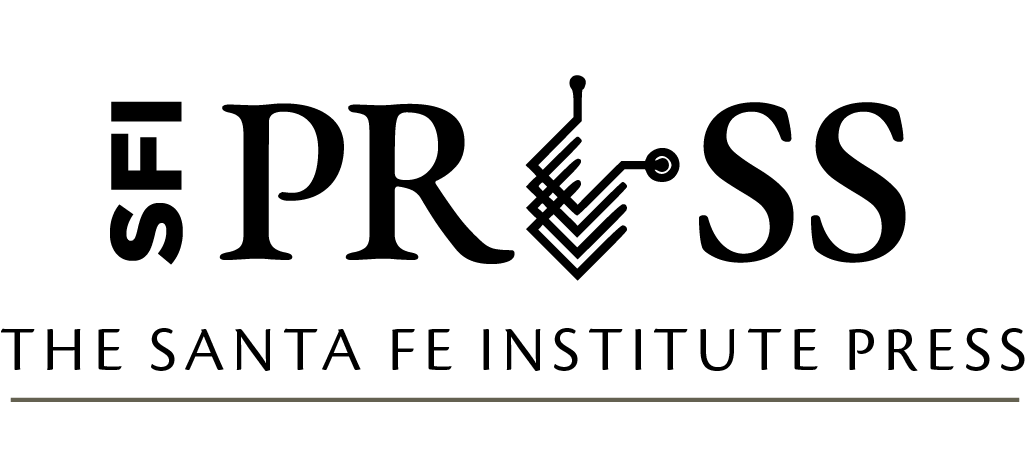Foundational Papers in Complexity Science pp. 2429–2445
DOI: 10.37911/9781947864559.77
The Costs of Miscoordination
Author: Willemien Kets, Utrecht University and Santa Fe Institute
Excerpt
Nobody goes there anymore. It’s too crowded.—Yogi Berra
With some papers, it is clear that they will become an instant classic. W. Brian Arthur’s 1994 “Inductive Reasoning and Bounded Rationality (The El Farol Problem)” is such a paper. Like many classics, it starts with a question anyone can understand: Suppose going to a bar is only pleasant if not too many people show up. How do you decide whether to go? This “bar problem” was inspired by the popular El Farol bar in Santa Fe.1 But, of course, this toy problem is an exemplar of a much more general class of problems: How do people divide a scarce resource among themselves? Yet game theory—the discipline that studies interactive decision-making—is ill equipped to address it. Classical game theory posits that players will coordinate on one of the equilibria of the game. The argument, roughly speaking, is this: If the system is not in equilibrium, then at least one of the players could gain by changing their action. For example, if few people are going to the bar one night, then at least one player would be better off if they attended rather than staying home. And even if people face this problem repeatedly (say, every Thursday night), it is far from clear the system would converge to an equilibrium. Of course, people can look at past attendance to predict how many people will go. But if everyone uses the same forecasting model, then predictions are bound to be invalidated: If all believe few will go, all will go; and if all believe most will go, nobody will go. So, if some stationary state is to emerge, it will involve persistent heterogeneity.
Bibliography
Arthur, W. B. 1989. “Competing Technologies, Increasing Returns, and Lock-in by Historical Events.” Economic Journal 99 (394): 116–131. https://doi.org/10.2307/2234208.
Arthur, W. B., J. H. Holland, B. LeBaron, R. Palmer, and P. Tayler. 1997. “Asset Pricing under Endogenous Expectations in an Artificial Stock Market.” In The Economy as an Evolving Complex System II, edited by W. B. Arthur, S. Durlauf, and D. Lane. Boston, MA: Addison-Wesley.
Challet, D., M. Marsili, and Y. C. Zhang. 2004. Minority Games: Interacting Agents in Financial Markets. Oxford, UK: Oxford University Press.
Coolen, A. C. 2005. The Mathematical Theory of Minority Games: Statistical Mechanics of Interacting Agents. Oxford, UK: Oxford University Press.
Dafoe, A., E. Hughes, Y. Bachrach, T. Collins, K. R. McKee, J. Z. Leibo, K. Larson, and T. Graepel. 2020. Open Problems in Cooperative AI. ArXiv preprint arXiv:2012.08630. https://doi.org/10.48550/arXiv.2012.08630.
Kets, W. 2011. “Learning with Fixed Rules: The Minority Game.” Journal of Economic Surveys 26:865–878. https://doi.org/10.1111/j.1467-6419.2011.00686.x.
Kets, W., W. Kager, and A. Sandroni. 2022. “The Value of a Coordination Game.” Journal of Economic Theory 201:105419. https://doi.org/10.1016/j.jet.2022.105419.
Miller, J. H., and S. E. Page. 2009. Complex Adaptive Systems. Princeton, NJ: Princeton University Press. Neumann, Von, and Morgenstern. 1944. Theory of Games and Economic Behavior. Princeton, NJ: Princeton University Press.
Sandholm, W. H. 2010. Population Games and Evolutionary Dynamics. Cambridge, MA: MIT Press. Zermelo, Ernst. 1913. “Über eine Anwendung der Mengenlehre auf die Theorie des Schachspiels.” In Proceedings of the Fifth Congress of Mathematicians, 501–504. Cambridge University Press. Cambridge.
